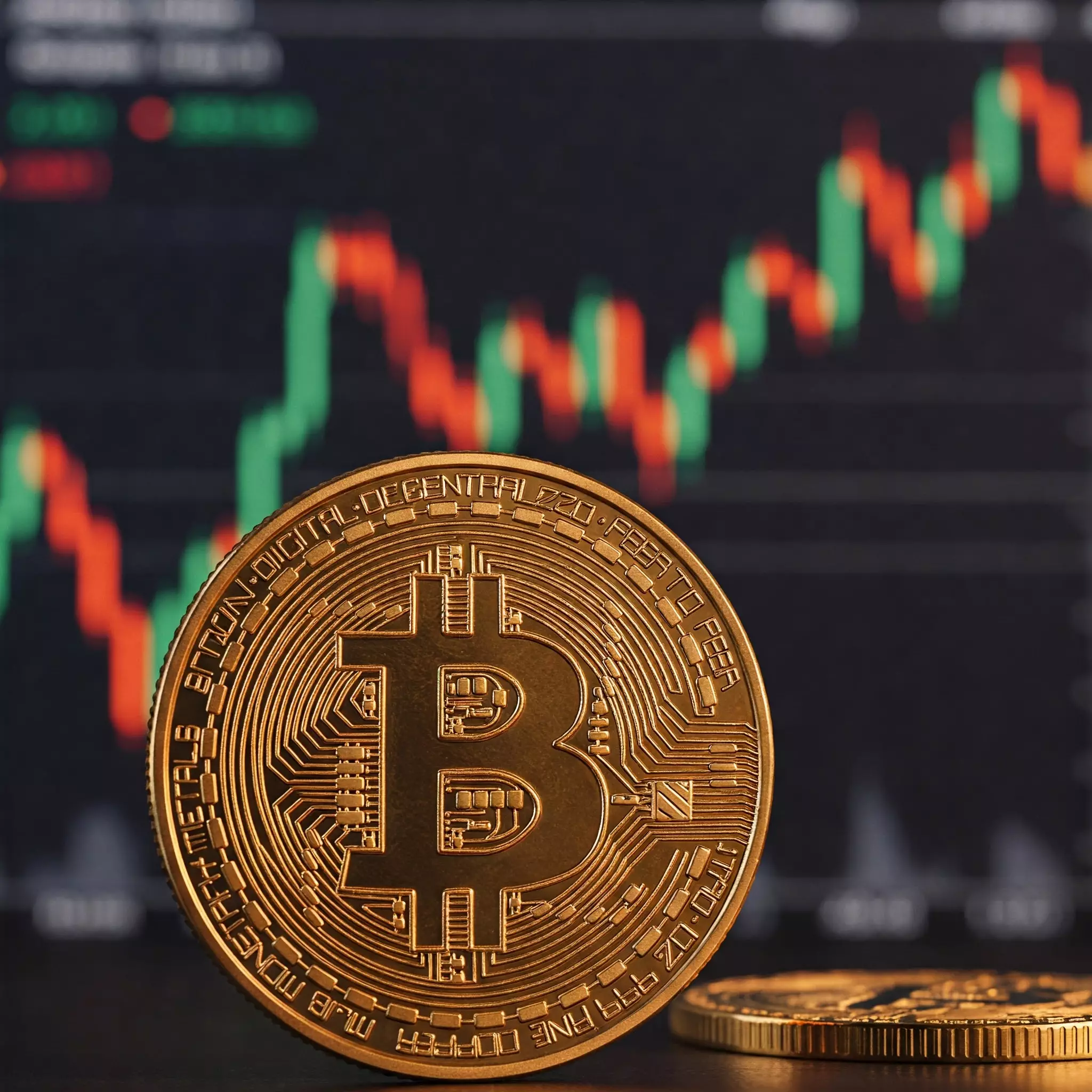The cryptocurrency landscape, specifically Bitcoin, continues to elicit a whirlwind of emotions, from euphoria to despair, especially during unpredictable economic climates. Recent data indicates that Bitcoin rebounded to $80,000 after experiencing a sharp decline—spurred largely by widespread panic linked to US President Donald Trump’s tariff strategies. This volatility embodies the conflict inherent in crypto trading: it thrives on speculation and unrestrained investor sentiment, which can swing from optimism to fear at breakneck speed.
The cryptocurrency market’s swiftness echoes the unpredictable nature of life itself; however, it is critical to discern the broader implications. The recent price fluctuations are not merely reflections of the cryptocurrency’s intrinsic merit or failures but are deeply interwoven with external economic anxieties. This overlapping reality forces investors and traders to confront unsettling questions about the future of digital assets.
Bitcoin’s Resurgence: A Safe Haven?
As Bitcoin’s market capitalization soars to an astonishing $1.5 trillion, one may wonder: has Bitcoin become a refuge amid economic chaos? Its increased dominance—now pegged at 60%—suggests that investors might be retreating into this leading digital asset as a shield against uncertainty. The allure of Bitcoin seems linked not just to its performance but by its growing stature as an alternate store of value in times of crisis, reflecting a tumultuous market fundamentally tied to global sentiments rather than clarion calls for libertarian reforms.
In a marketplace that often resembles a theater of the absurd, where altcoins flounder in the wake of Bitcoin’s glory, one couldn’t help but ponder whether the cryptocurrency landscape is fostering a new economic elitism. If Bitcoin emboldens itself as the go-to for crisis management, are we inadvertently cementing a hierarchy that disproportionately favors digital gold over emerging technologies?
Understanding Futures Markets: A Double-Edged Sword
The latest reports shed light on Bitcoin futures, revealing an open interest of $34.5 billion—a figure that appears stable even after a brief recovery from a prior low. This façade of stability, however, begs the question: how much quantitative drumming can the market sustain? As trading activity continues to unwind, traders exhibit a cautious disposition, withdrawing from futures exposure as they grapple with fluctuating prices.
The wave of entities expressing interest in Bitcoin futures also carries a downside: the potential for dramatic price swings. As Bitcoin experienced an approximate 10% decline, the liquidation figure of $58 million appears relatively modest when compared to historical precedents where daily liquidations soared over $140 million. What this indicates is not just a momentary hiccup; it reflects a nuanced sentiment prevailing in the futures market where speculative risk-taking is met with disciplined prudence.
The Future: Institutional Demand or Speculative Folly?
An intriguing layer emerges from the current turbulence—there’s a report of heightened institutional interest in Bitcoin despite the inherent volatility. A striking 76 new entities possessing over 1,000 BTC have entered the fray within a span of two months, marking a 4.5% increase in large Bitcoin holders. This emerging trend posits a valid dual narrative: on one hand, it could signal long-term confidence in Bitcoin; on the other, it evokes fears of a speculative bubble inflating as financial institutions dip their toes into the Bitcoin pool for potentially unsustainable gains.
This dichotomy reflects a broader ideological battle in the digital asset domain. Should the rise of institutional investors be hailed as an endorsement of Bitcoin’s legitimacy, or does it indicate a shift toward asset consolidation that could undermine the crypto ethos of democratized finance? These complexities paint a compelling picture of Bitcoin’s future, gleaning insights about capitalism at play and the endless tug-of-war between innovation and regulation.
It’s evident that Bitcoin’s resilience intertwines with a broader spectrum of financial dynamics and human sentiment. The market’s reactions to external shocks highlight an intricate tapestry of speculative behavior layered upon real-world fears. Moving forward, how traders and investors navigate these turbulent waters may define not just the future of Bitcoin, but the very essence of the financial ecosystem that surrounds it.


Leave a Reply